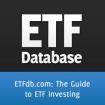Extracts courtesy of a special year-end story from Terry Flanagan at MarketsMedia

The Standard & Poor’s 500 Index stood at 1,380 in mid-November, down about 5% from 1,450 five years earlier. To a visitor from Mars, the similarity of the numbers could suggest that it was a quiet period for financial-market participants.
But in reality, it has been the opposite, as the past five years has been perhaps the most tumultuous half-decade period in the history of global markets.
The fragile, end-of-rally market of late 2007 gave way to a full-blown financial crisis by September 2008, the nadir of which which lasted into 2009. Massive interventions on the part of governments worldwide staved off a doomsday scenario, setting the stage for some stabilization and a market rebound in 2009-2010. But the recovery has yet to sustain itself, and 2011 and 2012 have proved largely disappointing.
“The past five years will likely be viewed as a landmark period of timeless case studies within the history of financial markets,” said Karim Taleb, principal of investment manager Robust Methods.
“For institutional trading this was one of the most challenging market environments that I have witnessed in my career,” said Steve Hedger, head of equity trading at Fifth Third Asset Management. “Lack of liquidity, extreme volatility, and a disappearance of several venerable brokerage firms made seasoned traders earn their keep.”
The challenges for institutional traders such as Hedger revolve around liquidity sourcing-that is, finding sellers for buy orders and buyers for sell orders. Aside from the demise of Lehman Brothers and Bear Stearns, other liquidity sappers include tightening regulation of Wall Street, which has prompted surviving big banks such as Goldman Sachs and Morgan Stanley to pull in their trading horns, and a more general malaise and mistrust among buy-side investors, both retail and institutional.

Michael Wallach, CEO WallachBeth Capital
Aside from regulation, the most noteworthy topics from a broker-dealer perspective are the evolution and impact of trading technology and the exponential growth of institutions using both exchange-traded-products and option-centric hedging tools, according to Michael Wallach, chief executive of agency-only broker-dealer WallachBeth Capital.
Even with the proliferation of electronic trading, it has its limitations, and voice and floor will continue to offer liquidity, at least for some trades. “What hasn’t changed is the fact that trading screens remain notoriously one-dimensional despite the three-dimensional nature of financial markets,” Wallach said.
Additionally, market disruptions, geopolitically driven volatility spikes, and diminished investor confidence have sharpened focus on broker-dealers’ fiduciary obligations, Wallach said.
“What has struck me over the past five years is the level of innovation that we have seen in the market,” said John Kelly, chief operating officer at Liquidnet. “This has provided the means for investors to seek out growth, yield, diversity, or safety to a degree that was never before achievable.”
One market veteran’s perspective trumped the CNBC survey by a factor of five. “We enter the next five years with a significantly higher degree of uncertainty than any time I can recall in more than 30 years,” said Kelly of Liquidnet.
For the entire article (its a great read!) please visit MarketsMedia online platform
![]() Courtesy of Peter Chapman, Traders Magazine
Courtesy of Peter Chapman, Traders Magazine
 For those following this deal, today’s WSJ column by Jason Bunge profiles the mindset of ICE CEO Jeffrey Sprecher, and it speaks volumes. It also raises concerns on the part of Wall Street’s biggest firms, who, along with exchanges, reap tens of millions of dollars in fees that more than a few consider to be wrought with conflict, and are necessarily loathe to put the genie back in the bottle.
For those following this deal, today’s WSJ column by Jason Bunge profiles the mindset of ICE CEO Jeffrey Sprecher, and it speaks volumes. It also raises concerns on the part of Wall Street’s biggest firms, who, along with exchanges, reap tens of millions of dollars in fees that more than a few consider to be wrought with conflict, and are necessarily loathe to put the genie back in the bottle.
 ]:
]:

 December 3, New York, NY—WallachBeth Capital LLC (“WB”), the institutional agency broker specializing in options and Exchange-Traded-Fund (ETFs), announced the hiring of Matt Gohd, the trading market strategist whose contrarian market calls have been widely-followed for two decades by leading hedge fund managers and industry observers. Mr. Gohd, a 30-year industry veteran joins WallachBeth as Senior Managing Director/Option Strategy.
December 3, New York, NY—WallachBeth Capital LLC (“WB”), the institutional agency broker specializing in options and Exchange-Traded-Fund (ETFs), announced the hiring of Matt Gohd, the trading market strategist whose contrarian market calls have been widely-followed for two decades by leading hedge fund managers and industry observers. Mr. Gohd, a 30-year industry veteran joins WallachBeth as Senior Managing Director/Option Strategy.
 Courtesy of Andy Nybo, TABB Forum
Courtesy of Andy Nybo, TABB Forum Mini options may be simple in concept, but their very simplicity masks many of the challenges that will inevitably arise, especially if the contracts see broad trading success. On the surface, mini option products look just like their larger brethren — the “only” difference is that the deliverable size for a mini option is 10 shares of the underlying as opposed to 100 shares for standard contracts. All other facets for minis remain the same, with expirations, strikes and classes all replicating the standard contract terms. To date, exchanges have proposed listing mini options to five “high priced” stocks with a large retail following, namely Amazon, Apple, Google, the Spider S&P 500 ETF, and the Spider Gold Trust.
Mini options may be simple in concept, but their very simplicity masks many of the challenges that will inevitably arise, especially if the contracts see broad trading success. On the surface, mini option products look just like their larger brethren — the “only” difference is that the deliverable size for a mini option is 10 shares of the underlying as opposed to 100 shares for standard contracts. All other facets for minis remain the same, with expirations, strikes and classes all replicating the standard contract terms. To date, exchanges have proposed listing mini options to five “high priced” stocks with a large retail following, namely Amazon, Apple, Google, the Spider S&P 500 ETF, and the Spider Gold Trust.
 1.6992 (+8.56%)
1.6992 (+8.56%)